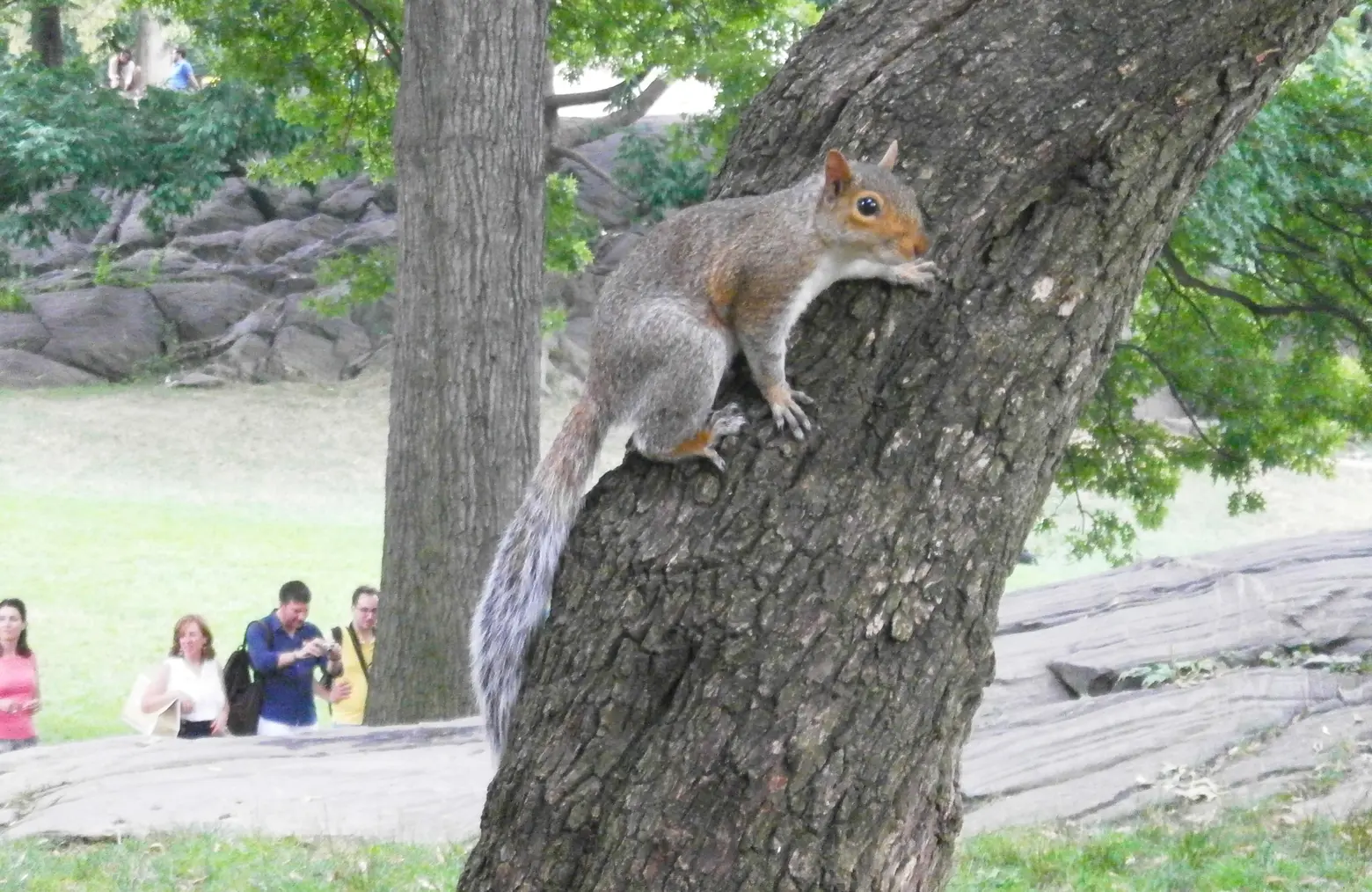First-ever squirrel census finds 2,300+ squirrels call Central Park home

A Central Park squirrel, via Wiki Commons
Last October, as 6sqft reported, an organization called Squirrel Census, headed by Jamie Allen, began the multimedia, science, design, and storytelling endeavor of figuring out how many squirrels–specifically eastern gray squirrels–call the 843 acres of Central Park home, and put out a call for critter-counting volunteers. Though attempting to fathom the magnitude of the park’s squirrelscape began with some curiosity and a bit of tongue in cheek, according to Citylab, the methods used to tally the cheeky rodents–and the resulting findings–are as fun as they are fascinating.
So how many eastern gray squirrels live in Central Park? The short answer: 2,373. That’s the number Allen, a humorist and writer, and the over-300 volunteers on board for the project arrived at after many months on the job. The team didn’t merely count the squirrels. Just as the U.S. Census records a wide array of demographic information, Squirrel Census provides a trove of details about where each squirrel was spotted, what color its fur was and whether clusters of the same type were noted throughout the park.
After some early squirrel-counting done on a whim, Allen had decided to tackle Central Park for the sheer challenge of it, but also because “determining the squirrel density of a park is a way to understand the health of that green space.” He adds, “We like to think of squirrels as the unofficial mascots of New York City. We hope park-lovers will come out and help count these furry New Yorkers in the name of science and the great outdoors.”
The project also cited the larger scientific community as part of their motive, explaining that the census will provide data for “future squirrel counts and other animal studies.” In addition to the number of squirrels in the park, the group hoped to learn behavioral trends that relate to one of the only mammals that has chosen to live right alongside humans in broad daylight. Once the census was done, the project’s chief cartographer would create a multimedia, interactive map of Central Park.
Overall, volunteers tallied 3,023 squirrel sightings–noting that some were likely counted more than once). Of those, about 81 percent (approximately 2,472 squirrels) were gray squirrels, plus various mixes of black, white, and cinnamon highlights. 393 were mostly cinnamon-colored; 103 were black. The team noted 21 fur-color variations.
Volunteers also recorded the squirrel behaviors, which were sometimes, well, squirrelly: One record notes a squirrel hanging in a tree “like an acrobat, hanging onto branch by its legs upside down.” One overstimulated rodent “got bored.”
The methods used by the intrepid squirrel-counters were as clever as the bushy-tailed New Yorkers themselves. Mainly: divide and conquer. The team created a grid of 350 hectare–10,000 square meters–plots of land over a map of Central Park–tiny census tracts if you will. Volunteers then spread out and did two counts, one in the morning and another at night. The “Squirrel Sighters,” spent 20 minutes on each search-and-count mission, scanning the foliage high and low and listening for squirrel sounds. What made the undertaking easier than it might have been? Says Allen, “Squirrels give themselves away by eating.”
The team arrived at an “abundance number” after running their data through a formula popularized in the 1950s and ’60s by leading squirrel biologist Vagn Flyger; the formula allows for “the uncertainties of counting squirrels.” To help visualize exactly where the critters live, Squirrel Census member Nat Slaughter—a graphic designer and mapmaker—spent a full two years pre-census making intricately detailed maps of Central Park.
Though Allen says he will eventually release the data into New York City’s open data portal, he feels the project goes beyond a head count. It allows visitors to experience the park differently than you would if you were simply jogging through. Primarily, though, it’s a way of telling a story about Central Park and one of its many citizens. Slaughter adds, “It tunes the person to the environment and makes you notice things that you otherwise wouldn’t.”
You can peruse the full report here.
[Via Citylab]
RELATED:




























